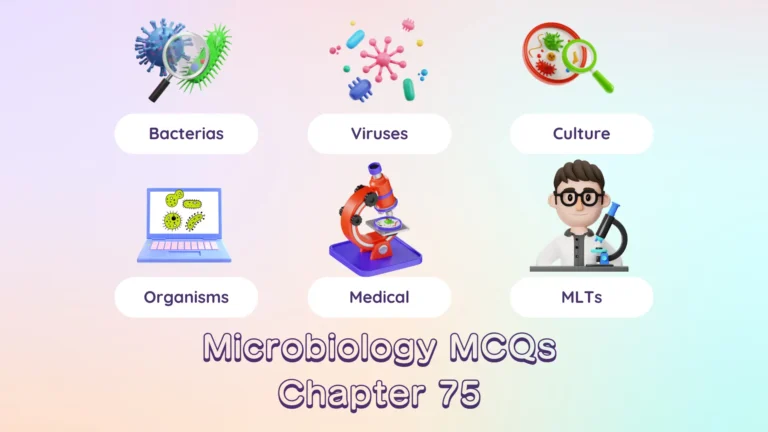Silver Staining 50 FAQs and 30 MCQs:

Silver Staining 50 FAQs:
What is silver staining?
Silver staining is a highly sensitive technique used to detect and visualize proteins, DNA, RNA, and certain microorganisms in gels after electrophoresis.
Why is silver staining preferred for protein detection?
It is highly sensitive (detects proteins in the low nanogram range), cost-effective, and does not require expensive equipment.
How does silver staining work?
Silver ions bind to amino acid side chains (e.g., carboxyl and sulfhydryl groups) in proteins, forming microscopic silver crystals that appear as dark bands.
What are the two major protocols of silver staining?
The alkaline protocol (uses silver diamine complex) and the acidic protocol (uses silver nitrate in water).
What is the principle behind silver staining?
Selective reduction of silver ions to metallic silver at protein nucleation sites, forming visible dark bands.
What are the key stages of silver staining?
Fixation, sensitization, silver impregnation, development, and stopping.
How long does silver staining take?
Depending on the protocol, it can take 1 hour to over 24 hours.
How stable is a silver-stained gel?
The stain remains stable for several weeks before fading.
What color do protein bands appear in silver staining?
Dark brown or black, depending on silver grain size and protein concentration.
Can silver staining be used for DNA and RNA detection?
Yes, it can detect nucleic acids in gels.
What is the role of formaldehyde in silver staining?
It reduces silver ions to metallic silver, aiding in visualization.
Why is silver nitrate used in silver staining?
It provides silver ions that bind to proteins for detection.
What is the purpose of ammonium hydroxide in silver staining?
It helps form the silver-ammonia complex in alkaline protocols.
Why is sodium thiosulfate used?
It reduces background staining but must be freshly prepared due to instability.
What type of water should be used in silver staining?
High-purity water (resistivity >15 MΩ/cm) to avoid impurities.
Can denatured ethanol be used in silver staining?
No, only absolute or 95% ethanol should be used.
What is the role of acetic acid in silver staining?
It helps in fixation and stopping the staining reaction.
Why is potassium tetrathionate used?
It acts as a sensitizer, enhancing protein reactivity with silver.
What is the stop solution in silver staining?
A mix of Tris and acetic acid or ethanolamine and acetic acid to halt development.
How should silver nitrate solutions be stored?
In dark, cold conditions (e.g., fridge) to prevent degradation.
What is the first step in silver staining?
Fixation, which immobilizes proteins and removes interfering compounds.
Can multiple gels be stained simultaneously?
Yes, up to 4 gels per box, except during development.
What is the recommended agitation method during staining?
A rocking table (not orbital shaker) at 30–60 strokes/minute.
How should gels be handled during staining?
With powder-free nitrile gloves to avoid pressure marks.
What is the purpose of rinsing gels between steps?
To remove excess reagents and prevent background staining.
What is the difference between short and long silver nitrate staining?
Short staining (~2 hours) is faster, while long staining (overnight) offers higher sensitivity.
What is the hollow spot phenomenon?
A transparent zone in gels, common in aldehyde-free silver-ammonia staining.
How is background staining minimized?
By using thiosulfate and proper washing steps.
Can silver-stained gels be used for mass spectrometry?
Yes, but formaldehyde-fixed gels are incompatible.
What is the destaining solution for mass spectrometry?
A mix of potassium ferricyanide and sodium thiosulfate.
What microorganisms can be detected with silver staining?
Bacteria (Pseudomonas, Treponema pallidum, Helicobacter pylori) and fungi (Candida, Cryptococcus).
Can silver staining detect lipopolysaccharides (LPS)?
Yes, it detects bacterial and fungal LPS.
How is silver staining used in proteomics?
To visualize protein bands after SDS-PAGE or 2D electrophoresis.
Is silver staining quantitative?
Partially, as band intensity correlates with protein amount, but not as precise as other methods.
What is the detection limit of silver staining?
Low nanogram (ng) to sub-nanogram range.
How does silver staining compare to Coomassie Blue?
30–100x more sensitive but more complex.
Can silver staining detect glycoproteins?
Yes, but acidic glycoproteins may show hollow spots.
What is the best silver staining protocol for uniform results?
Silver-ammonia staining with formaldehyde fixation, but it’s incompatible with mass spectrometry.
Can silver staining be automated?
Yes, but manual protocols are more common due to cost.
What are the limitations of silver staining?
Background issues, time-consuming steps, and incompatibility with some downstream analyses.
Why do gels turn yellow during staining?
Due to old thiosulfate or impure water.
How can I prevent high background staining?
Use fresh formaldehyde, proper washing, and correct silver-ammonia ratios.
What causes uneven staining?
Insufficient agitation, expired reagents, or gel handling errors.
Why do some proteins appear faint?
Due to low protein concentration or improper silver impregnation.
How can I improve sensitivity?
Use long staining protocols or optimized silver-ammonia solutions.
Can I reuse silver nitrate solutions?
No, they degrade and lose sensitivity.
How should I store stained gels?
Between polyester sheets or in fixative solution to prolong stability.
What safety precautions are needed?
Work in a fume hood (formaldehyde), avoid explosive silver waste, and wear gloves.
Why does my gel have black speckles?
Due to contaminants or improperly cleaned containers.
What is the best way to document silver-stained gels?
Scanning in high resolution or photographing under consistent lighting.
Silver Staining 30 MCQs :
1. What is the primary purpose of silver staining?
a) To separate DNA fragments
b) To detect proteins in gels✔
c) To quantify RNA concentration
d) To visualize lipids
2. Which functional groups in proteins does silver bind to?
a) Phosphate and hydroxyl
b) Carboxyl and sulfhydryl✔
c) Amino and methyl
d) Carbonyl and amide
3. What is the sensitivity range of silver staining?
a) Milligram (mg) range
b) Microgram (µg) range
c) Nanogram (ng) range✔
d) Picogram (pg) range
4. Which of the following is NOT a step in silver staining?
a) Fixation
b) Sensitization
c) PCR amplification✔
d) Development
5. What is the role of formaldehyde in silver staining?
a) To denature proteins
b) To reduce silver ions to metallic silver✔
c) To increase gel porosity
d) To remove background staining
6. Which protocol uses a diamine complex of silver nitrate in an alkaline medium?
a) Acidic protocol
b) Neutral protocol✔
c) Alkaline protocol
d) Organic protocol
7. How long can a silver-stained gel remain stable for observation?
a) A few hours
b) Several weeks✔
c) Indefinitely
d) Only until drying
8. What color do protein bands appear in silver staining?
a) Blue
b) Red
c) Dark brown or black✔
d) Green
9. Which of the following is a disadvantage of silver staining?
a) Low sensitivity
b) High cost
c) Time-consuming steps✔
d) Incompatibility with gels
10. What type of water should be used in silver staining?
a) Tap water
b) Distilled water with resistivity >15 MΩ/cm✔
c) Saltwater
d) Deionized water with impurities
11. Which reagent helps reduce background staining?
a) Sodium thiosulfate✔
b) Ethanol
c) Acrylamide
d) Phenol red
12. What is the purpose of fixation in silver staining?
a) To immobilize proteins and remove contaminants✔
b) To amplify protein bands
c) To dissolve the gel
d) To add fluorescence
13. Which staining protocol is best for mass spectrometry compatibility?
a) Formaldehyde-fixed silver ammonia staining
b) Aldehyde-free silver ammonia staining✔
c) Long silver nitrate staining
d) Fast Coomassie staining
14. What causes the “hollow spot” phenomenon in silver staining?
a) Over-staining
b) Acidic glycoproteins✔
c) High protein concentration
d) Use of Coomassie Blue
15. How does silver staining compare to Coomassie Blue staining?
a) Less sensitive but faster
b) More sensitive but more complex✔
c) Only works for DNA
d) Requires radioactive labeling
16. Which of the following bacteria can be detected using silver staining?
a) Escherichia coli
b) Treponema pallidum
c) Bacillus subtilis
d) All of the above✔
17. What is the stop solution in silver staining made of?
a) Tris and acetic acid✔
b) NaOH and HCl
c) SDS and EDTA
d) Phenol and chloroform
18. Why should powdered latex gloves be avoided in silver staining?
a) They cause allergic reactions
b) They leave pressure marks on gels✔
c) They dissolve in ethanol
d) They interfere with electrophoresis
19. What is the critical factor in silver-ammonia solution preparation?
a) Silver-to-ammonia ratio✔
b) Temperature of mixing
c) Presence of EDTA
d) Gel thickness
20. How should silver nitrate waste be disposed of?
a) Pour down the sink
b) Mix with sodium chloride to precipitate silver
c) Incinerate
d) Store indefinitely✔
21. Which step requires individual gel handling (not batch processing)?
a) Fixation
b) Sensitization
c) Image development✔
d) Washing
22. What is the boiling point of silver?
a) 500°C
b) 961°C
c) 2162°C✔
d) 3500°C
23. Which chemical is used for gel sensitization?
a) Potassium tetrathionate✔
b) Sodium dodecyl sulfate
c) Ethidium bromide
d) Bromophenol blue
24. What is the main advantage of silver staining over fluorescent dyes?
a) No need for UV light
b) Cheaper equipment
c) Higher resolution
d) Both a and b✔
25. What causes black speckles on silver-stained gels?
a) Contaminated water
b) Dirty containers
c) Old formaldehyde
d) All of the above✔
26. Which of the following is NOT detected by silver staining?
a) Proteins
b) DNA
c) Lipids✔
d) RNA
27. What is the best way to store silver nitrate solutions?
a) In a transparent bottle at room temperature
b) In a dark, cold place (e.g., fridge)✔
c) In direct sunlight
d) Mixed with formaldehyde
28. Which staining protocol is the fastest?
a) Long silver nitrate staining
b) Aldehyde-free silver ammonia staining
c) Short silver nitrate staining (~2 hours)✔
d) Coomassie Blue staining
29. What is the primary safety concern with silver staining?
a) Radioactivity
b) Formaldehyde toxicity✔
c) High voltage
d) Extreme cold
30. What is the best method to document silver-stained gels?
a) Photographing under UV light
b) Scanning in high resolution✔
c) Drawing by hand
d) Using X-ray film
Possible References Used





